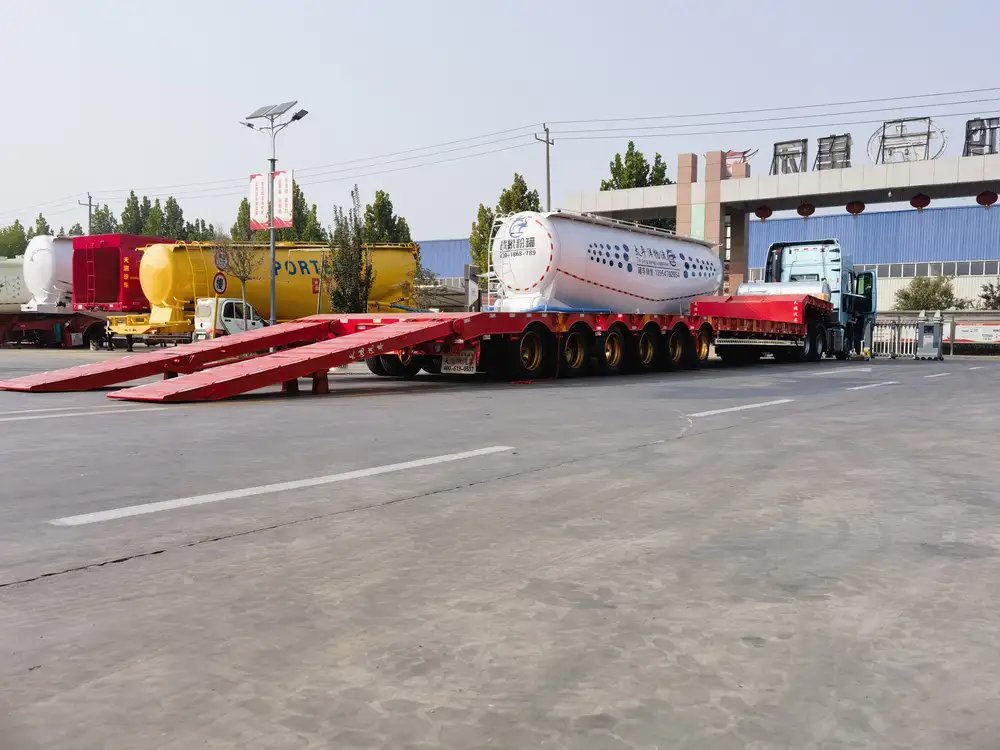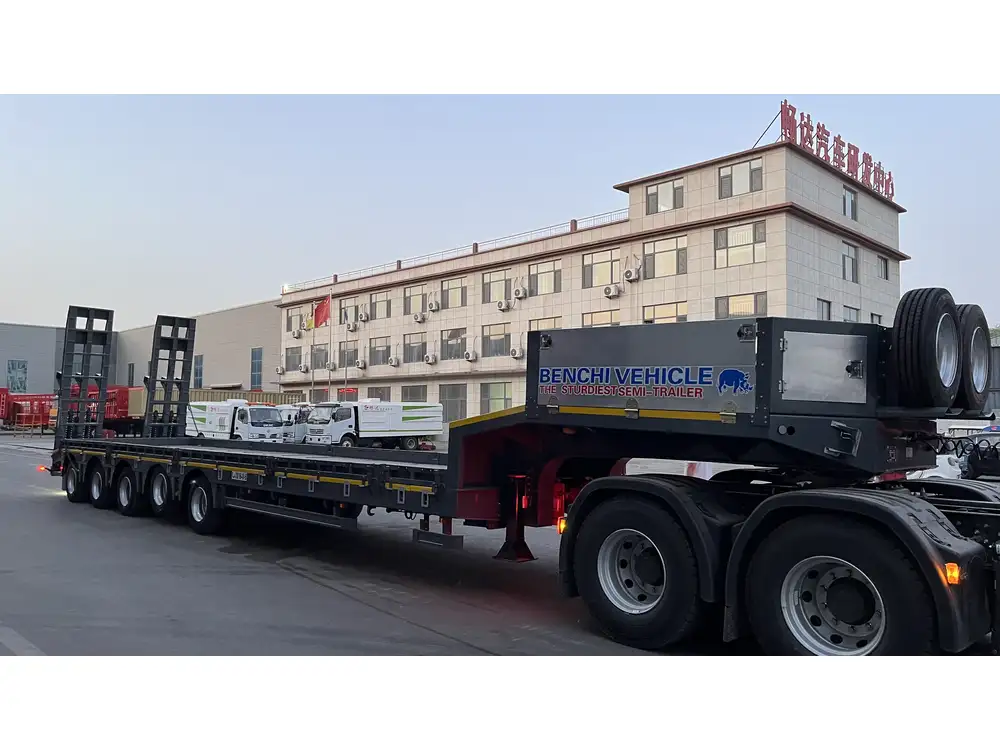When it comes to the transportation industry, one crucial aspect that both logistics professionals and drivers need to comprehend is the height of flatbed semi-trailers. This knowledge is pivotal for ensuring compliance with regulatory restrictions, optimizing load configurations, and navigating various transport routes effectively. In this detailed exploration, we will dissect the question: “How tall is a flatbed semi-trailer?” and provide comprehensive insights regarding various factors influencing their height.
Flatbed Semi-Trailer Dimensions: Standard Specifications
Flatbed semi-trailers are versatile transport equipment widely used for carrying large, heavy, or oversized goods. Their height can vary based on several factors, including the design, manufacturer specifications, and the type of cargo they are intended to carry. Let’s delve into the standard dimensions.
Standard Height Range
The typical height of a flatbed semi-trailer ranges between 13.5 feet (162 inches) and 14 feet (168 inches) when unloaded. However, variations can exist based on:
| Component | Standard Measurement |
|---|---|
| Trailer Height (Unloaded) | 13.5 – 14.0 feet |
| Deck Height | 3.5 – 4.0 feet |
| Maximum Legal Height | 13.5 feet (in most U.S. states) |
These measurements are essential for ensuring that the rig complies with state regulations regarding maximum vehicle dimensions.

Variations in Design
Several design configurations can affect the overall height of a flatbed semi-trailer:
Gooseneck Trailers: Often used for larger loads, these can exceed traditional height standards due to their design, allowing for more maneuverability and load capacity.
Drop Deck Trailers: With a lower deck height for transporting taller cargo, these can range significantly in height based on their configuration.
Multi-Axle Trailers: These trailers can also have different height specifications depending on their number of axles and load distribution capabilities.
Factors Influencing Flatbed Semi-Trailer Height
Understanding the height characteristics of flatbed semi-trailers requires consideration of several factors beyond just the standard measurements.
1. Type of Cargo
The load being transported plays an integral role in determining how tall a flatbed semi-trailer must be. For instance, loads that include machinery, construction equipment, or bulk materials may necessitate adjustments in height for stability and safety during transit.

2. Regional Regulations
Laws regulating vehicle height can differ significantly between states or countries. For example, while the federal maximum in the U.S. is 13.5 feet, some regions may impose stricter limits. Understanding these regulations helps avoid fines and accidents.
3. Custom Modifications
Many trailers may be customized to meet specific market demands or client requirements. Height modifications can result from the need for increased clearance or enhanced loading capacity. This includes:
- Adjustable Suspension Systems: These allow for variations in height to accommodate uneven loads.
- Custom-Built Ramps: Importantly designed for specific cargo types, influencing the total connected height.
How to Measure a Flatbed Semi-Trailer’s Height?
Accurate measurement is paramount when determining your flatbed semi-trailer’s height. Follow these steps to measure effectively:
Choose a Flat Surface: Ensure the trailer is parked on level ground, devoid of any obstructions.
Use a Measuring Tape: From the ground, extend the measuring tape to the highest point of the trailer.
Record the Height: Ensure to note down the measurement and be aware of future adjustments made for specific loads.

Common Measuring Errors
When measuring, it’s crucial to avoid common errors such as:
- Not accounting for load-specific adjustments.
- Assuming a standard measurement without verifying the specific specifications of the trailer set.
Flatbed Semi-Trailer Load Capacity and its Relation to Height
A critical aspect of flatbed semi-trailers is their load capacity, which can be closely related to their design height.
Understanding Load Ratings
The load capacity of a flatbed is governed by its height, weight distribution, material composition, and axle configuration. The factors include:
| Trailer Type | Typical Load Capacity |
|---|---|
| Standard Flatbed Trailer | 48,000 – 65,000 lbs |
| Step Deck Trailer | 40,000 – 60,000 lbs |
| Double Drop Trailer | 40,000 – 80,000 lbs |
This impact of height on load varies as trailers that are taller can potentially accommodate larger cargo.

Dangers of Overloading
Exceeding the height and load limitations can lead to several severe problems:
Increased Risk of Accidents: Overheight loads are more susceptible to collisions with bridges, overpasses, and power lines.
Legal and Financial Consequences: Overheight violations can incur hefty fines, legal issues, or even suspension of operating licenses.
Best Practices for Managing Flatbed Trailer Height
To effectively manage the height of flatbed semi-trailers, consider adopting these practices:
1. Regular Calibration and Inspection
Ensure that all trailers are routinely calibrated and inspected to confirm the correct heights, particularly before embarking on transportation routes.

2. Compliance with Local Laws
Regularly update your knowledge base on trucking regulations to remain compliant with federal and regional laws regarding trailer height.
3. Training and Development
Invest in comprehensive training programs for drivers, ensuring they understand the importance of height measurements and local regulations.
Strategies for Selecting the Right Flatbed Semi-Trailer
Choosing the perfect flatbed semi-trailer involves more than just knowing the height. Consider these vital elements:

A. Load Types and Dimensions
Identify the types of goods requiring transportation. Understanding whether your goods are tall, heavy, or cumbersome will dictate the type of trailer needed.
B. Trip Distance and Regulatory Environment
Evaluate travel routes, taking into account infrastructure height limits and local vehicle regulations.
C. Future Needs and Capacity
Consider potential changes in cargo or business operations that could impact the choice of trailer height and design moving forward.

Conclusion
In summation, comprehending the height of flatbed semi-trailers is not merely an academic consideration; it is a vital aspect of effective logistics management. Ensuring compliance with regulations, understanding load requirements, and maintaining optimal trailer specifications can significantly influence transportation efficiency and safety.
By addressing these detailed insights and best practices, manufacturers, operators, and logistics professionals can enhance their operational efficacy while preventing costly mishaps. Understanding the multifaceted nature of flatbed semi-trailer heights empowers stakeholders to make informed decisions, leading to safer and more efficient transit processes.
Thus, whether you’re operating a small fleet or managing a larger logistics company, the nuances of flatbed trailer height can translate to increased safety, profitability, and reliability in your operations—an investment that extends far beyond the trailer itself.



